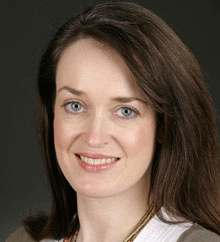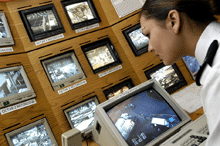 |
| Pauline Norstrom, Chairman, BSIA's CCTV Section has emphasised on the use of CCTV in crime solving |
Following the second reading of the Protection of Freedoms Bill in the House of Commons earlier this week, the British Security Industry Association (BSIA) is welcoming the positive comments made by many MPs in support of the crime-solving capabilities of CCTV systems.
The bill, which ministers claim will protect millions of people in England and Wales "from unwarranted state intrusion in their private lives", proposes that under the new law, the Home Secretary will be required to publish a code of conduct on using CCTV and other surveillance cameras. In addition to this, a new Surveillance Camera Commissioner will be appointed to monitor the operation of the code, reporting to Parliament once a year.
Debate over the bill went on well into the evening, with MPs from various political backgrounds commenting on how useful CCTV had been in cutting crime in their constituencies, adding that many local residents had in fact requested a greater CCTV coverage in their area. Former Home Secretary, Jack Straw, commented: "In the whole of my 32 years in this House, I have never had a single representation seeking the removal of CCTV monitors. Not one. The demand is there because it makes people feel safe."
Pamela Nash, Labour MP for Airdrie and Shotts, added: "Crime in Airdrie town centre fell by 24% in the first two years after the introduction of open-street CCTV. It continues to be supported locally, and is seen to be a great success in reducing crime and antisocial behaviour." This support comes soon after Shipley MP, Philip Davies, spoke out in support of the use of CCTV in a recent article written for the influential ConservativeHome website. In the article, Davies cites instances where CCTV evidence has helped secure convictions, adding that: "CCTV is not only an invaluable tool to the police, but also in courts. The footage provides a conclusive, unbiased account, void of someone's spin or recollection. It is very difficult to argue with CCTV images and they often lead to changes of pleas from not guilty to guilty."
 |
| Intruders can be monitored easily through the CCTV systems thus alarming the authorities about the situation in advance |
Pauline Norstrom, Chairman of the BSIA's CCTV Section, comments: "The crime-solving benefits of CCTV are well-publicised, as is its value as evidence in criminal proceedings. CCTV increasingly plays its part in preventing crime when combined with detector technology such as video analytics or external detection devices. Alarm integration capabilities which are embedded in high quality CCTV systems enable the handling of alarm triggers from unmanned sites and the subsequent transmission of video using flexible streaming techniques, an evolution from the early transmission systems which, many years ago, used the ISDN phone network, and today the IP backbone."
The BSIA has been at the forefront driving self-regulation and an example of this early intervention approach to surveillance has been BS8418-compliant remotely monitored, detector activated CCTV, which includes the audio challenge capability often referred to as 'talking CCTV'. Using this technology, operators, who can see the intruders live on site, having triggered the "invisible" alarms, can also confront intruders verbally, which in 90% of cases is sufficient to make them leave the scene.
To deal with more persistent intruders, BS8418 solutions have the potential for operators to alert the police at the earliest possible stage, using site maps and camera footage to direct officers to a specific area to help them make arrests.
Pauline Norstrom continues: "CCTV has been a silent witness to crime, gathering indisputable evidence after a crime has been committed, saving the Government millions as a result of guilty pleas, brokered after the criminal has been shown the video of himself committing the crime in question. The BSIA driven BS8495 standard for the export of digital video for the purpose of evidence has gone a long way to ensure that proper procedures are followed when exporting video evidence, and critically, Manufacturers have recognised the need to make this easy for the user in the context of authorised access. The reality of CCTV, today, is that it is increasingly a technology which is being used to support proactive intervention, so the damage and disruption caused by criminal activity can be dramatically curtailed."
"Should it become law, the Protection of Freedoms Bill will help to further ensure that CCTV is used as a force for good, reducing crime, protecting the public and strengthening public confidence in CCTV surveillance. As such, it is encouraging to see the benefits of CCTV recognised so publicly across the House of Commons."


















